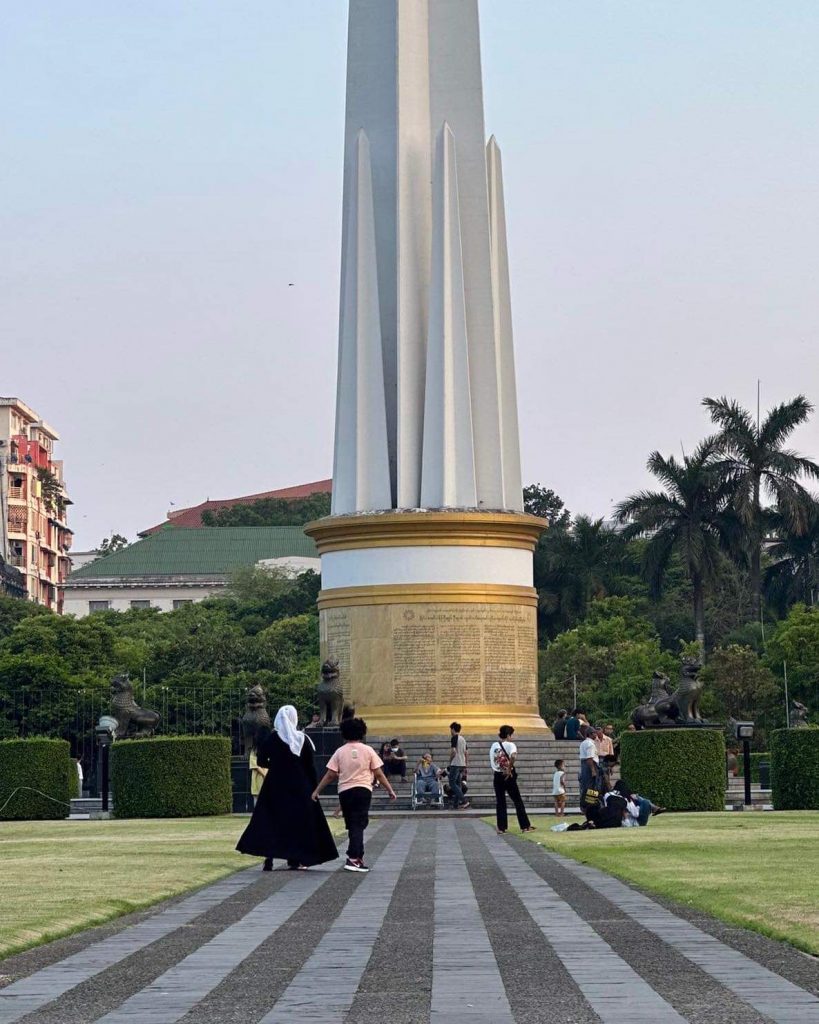Aung Ko Ko argues that the Spring Revolution provides an opportunity for an ideological marketplace to flourish.

Since the February 2021 coup in Myanmar, there has been significant political development, with Generation Z demanding a society that is free of ethnic and religious discrimination. The Burmese youth have challenged the traditional notion of the primacy and hierarchical institution of Buddhism, demanding social punishment of prominent monks. Monks such as Sitagu Sayadaw are viewed as complicit with the Burmese military and their crimes. Muslims and ethnic Chinese, most of whom are not officially recognized as Taingyithar or so-called ‘native’ ethnic groups, have also joined the revolution with the Bamar people and other ethnic nationalities to consolidate a collective consciousness in the hopes of creating a society that is fair and equal, rooted in the idea of civic nationalism. In multiple ways, the Spring Revolution is heavily challenging the right-wing ethno-religious-nationalist discourse endorsed by the Burmese military and its alliances after the coup.
For the Bamar people, or those who live in Bamar-dominant areas, the struggle is mainly based on class, particularly against the Burmese military, who have controlled the state through coercion. Since 1962, the Burmese military has monopolized all economic resources and channels for economic prosperity. Without affiliation or allegiance to the Burmese military, or if one fails to qualify for a particular social class or ethnoreligious identity (such as Bamar Buddhist), economic opportunities and mobility are extremely limited, or virtually non-existent, for the Myanmar people.
Through methods of soft and hard power, the Burmese military has prioritized the aggressive promotion of a Bamar-Buddhist, ethno-nationalist and religious agenda. This agenda has underpinned Burmese society since independence, determining one’s likelihood of prosperity and access to welfare. As the primary or even sole occupier of government institutions, the Burmese military has created an exclusive society, namely through the Taingyinthar classification, which prescribes a list of ethnic classifications within Burmese society.
Generational success is predicated on one’s classification under Taingyinthar policies. Because they hold the means to the legitimate use of violence, the Burmese military has continuously abused this prerogative, targeting various ethnic groups all over the country with violent acts. The history/legacy of ethnic resistance by Taingyinthar such as the Karen rebellion, and Kachin Independence Organization is predicated on the lack of inclusivity in Burmese society; those who cannot immediately ingratiate themselves into the Bamar-Buddhist classification/agenda and are heavily marginalized in Myanmar society.
Contrary to most beliefs, inter-ethnic conflict is not prevalent in Myanmar; rather, various ethnic resistance movements against the state exist due to the Burmese state’s negligence to accommodate for Taingyinthar groups since independence. While different ethnic groups possess their respective grievances and frustrations with the Bamar-Buddhist agenda, it is important to note that these independent struggles create an opportunity for greater inter-ethnic consolidation through a class lens.
The need to frame greater inter-ethnic solidarity through a class lens stems from the aforementioned Burmese military monopolizing economic resources and channels in 1962. For 61 years, or just over 80% of Myanmar’s time as an independent sovereign state, the military acts as an oligarchy, creating an exclusive circle designated for those who align with the Bamar-Buddhist identity, or promulgate these identities.
While the Spring Revolution aims to build a federal democratic union through coalition-building among various multi-ethnic and political groups, the historical grievances of the Bamar and other ethnic minorities may vary. The ongoing debate on ethnic federalism and territorial federalism may arise from the different political identities of the Bamar and ethnic minorities.
It is important to acknowledge that there are also Rohingya and other minority groups in Myanmar who are not officially recognized as part of the national race (Taingyinthar) regime. These groups have unique political interests regarding the vision of federal democracy in Myanmar. Unfortunately, many among these populations are often the most vulnerable and marginalized in the country, especially during the recent failed political transition from 2010 to 2021.
In the current ongoing political discussions among resistance actors, including creating a transitional constitution, it’s essential to consider the full political spectrum of different interest groups. Personal, social, and political identities can shape these perspectives.
Although understanding history is vital for comprehending the conflict; it shouldn’t be the sole factor in determining it. Embracing the idea of pluralism can offer a solution for transforming Myanmar’s long-standing conflict in a more positive direction at this critical moment in history.
Aung Ko Ko is a Burmese scholar and organizer. His work focuses on identity politics and conflict resolution. He holds a Master’s degree in Conflict Resolution and Coexistence from Brandeis University.
Like This Article
June 18, 2024
June 03, 2024
March 06, 2024
February 23, 2024
February 22, 2024

Center for Southeast Asian Studies, Asian Institute 1 Devonshire Place Toronto, Ontario, M5S 3K7, Canada
©TeaCircle All Rights Reserved 2023